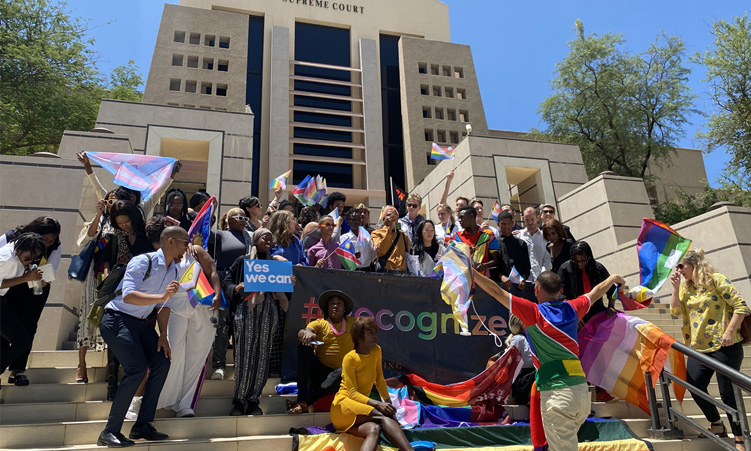HOUSEHOLDS and bulk water customers owe NamWater about N$700 million.
In addition, rural communities owe NamWater N$70 million for water supply transferred from the Directorate of Rural Water Supply in the Agriculture Ministry. This was revealed in a draft of Government’s new water supply and sanitation policy (WASSP) on Thursday.The policy, dating from 1993, had to be revised in view of the rising water debts in the country.According to the revised policy, which was discussed at a one-day workshop in Windhoek last week, bulk water customers owe NamWater N$200 million, consumers owe local authorities over N$200 million and in Windhoek alone, residents owe the municipality N$280 million, not only for water but also for other municipal services.Added up, water debts throughout Namibia total N$770 million.”The magnitude of this outstanding debt seriously restricts service provision and infrastructure maintenance, leading to asset stripping and a reduction of service capacity and coverage,” the draft WASSP document states.”Other inhabiting factors are inadequate human resources and (lack of) technical capacity in most local authorities.Although access to potable water in Namibia reaches 98 per cent of the population in urban areas and 80 per cent in rural areas, only 21 per cent of rural households have access to proper sanitation, the rest uses the bush (as a toilet),” Deputy Agriculture Minister Isak Katali said in his keynote address.”About 82 per cent of urban households have proper sanitation facilities.”This will not allow Namibia to attain the Millennium Development Goals (MDGs) by 2015,” Katali said.The MDGs are set development targets agreed by United Nations (UN) member states, including Namibia, eight years ago.The policy review recommends setting up a Directorate of Water Supply and Sanitation within the Agriculture Ministry, incorporating the existing Directorate of Rural Water Supply; establishing an independent water and sanitation tariff regulator and introducing a “fixed, low price for a defined minimum lifeline volume of water for residential consumers.”Tariffs should be adjusted upwards according to volumes of consumption.Consumers should be informed about tariff structures and possible cross-subsidisation should be transparent.”It is important that the consumer should know the amount of the subsidy, why the consumer is subsidised and by whom,” the draft WASSP document recommends.The WASSP review was drafted by the Desert Research Foundation of Namibia (DRFN) and the German technical co-operation agency GTZ.Cabinet resolved in April this year to have the review conducted and a special inter-ministerial committee was set up to give guidance during the review process.According to an assessment compiled by DRFN and GTZ for the water and sanitation policy review, Namibia would need about N$2,6 billion to achieve full coverage of these services across Namibia by 2030.This was revealed in a draft of Government’s new water supply and sanitation policy (WASSP) on Thursday.The policy, dating from 1993, had to be revised in view of the rising water debts in the country.According to the revised policy, which was discussed at a one-day workshop in Windhoek last week, bulk water customers owe NamWater N$200 million, consumers owe local authorities over N$200 million and in Windhoek alone, residents owe the municipality N$280 million, not only for water but also for other municipal services.Added up, water debts throughout Namibia total N$770 million.”The magnitude of this outstanding debt seriously restricts service provision and infrastructure maintenance, leading to asset stripping and a reduction of service capacity and coverage,” the draft WASSP document states. “Other inhabiting factors are inadequate human resources and (lack of) technical capacity in most local authorities.Although access to potable water in Namibia reaches 98 per cent of the population in urban areas and 80 per cent in rural areas, only 21 per cent of rural households have access to proper sanitation, the rest uses the bush (as a toilet),” Deputy Agriculture Minister Isak Katali said in his keynote address.”About 82 per cent of urban households have proper sanitation facilities.”This will not allow Namibia to attain the Millennium Development Goals (MDGs) by 2015,” Katali said.The MDGs are set development targets agreed by United Nations (UN) member states, including Namibia, eight years ago.The policy review recommends setting up a Directorate of Water Supply and Sanitation within the Agriculture Ministry, incorporating the existing Directorate of Rural Water Supply; establishing an independent water and sanitation tariff regulator and introducing a “fixed, low price for a defined minimum lifeline volume of water for residential consumers.”Tariffs should be adjusted upwards according to volumes of consumption.Consumers should be informed about tariff structures and possible cross-subsidisation should be transparent.”It is important that the consumer should know the amount of the subsidy, why the consumer is subsidised and by whom,” the draft WASSP document recommends.The WASSP review was drafted by the Desert Research Foundation of Namibia (DRFN) and the German technical co-operation agency GTZ.Cabinet resolved in April this year to have the review conducted and a special inter-ministerial committee was set up to give guidance during the review process.According to an assessment compiled by DRFN and GTZ for the water and sanitation policy review, Namibia would need about N$2,6 billion to achieve full coverage of these services across Namibia by 2030.
Stay informed with The Namibian – your source for credible journalism. Get in-depth reporting and opinions for
only N$85 a month. Invest in journalism, invest in democracy –
Subscribe Now!









